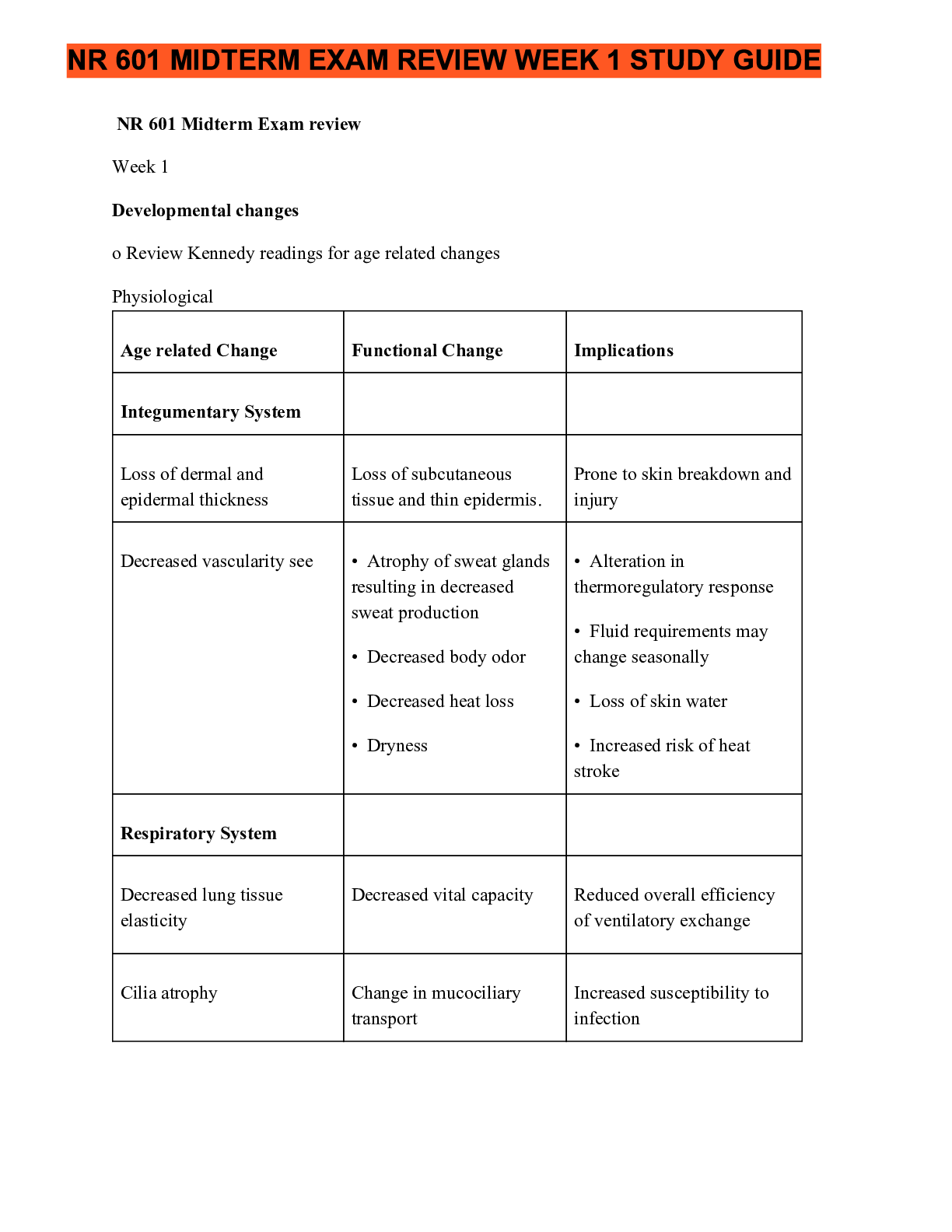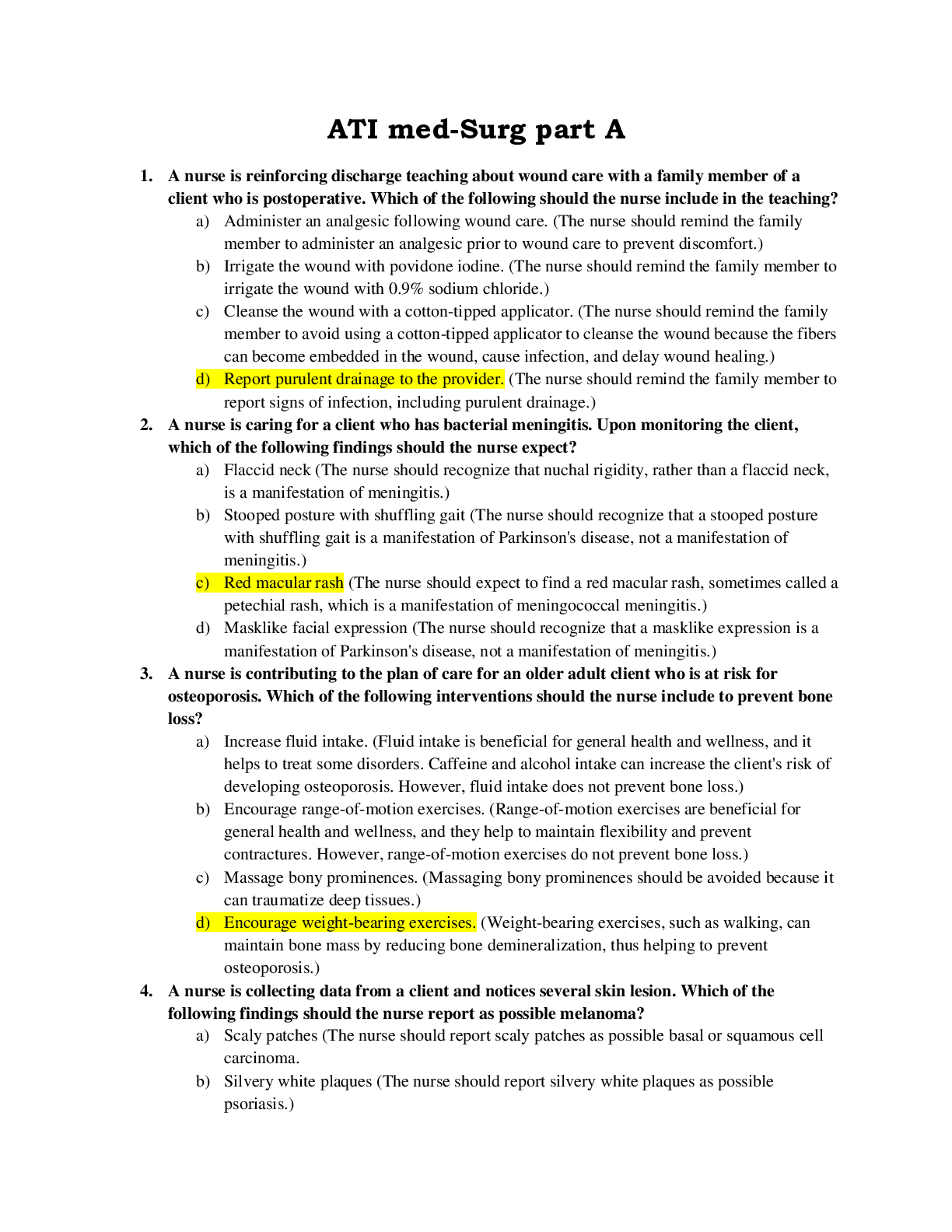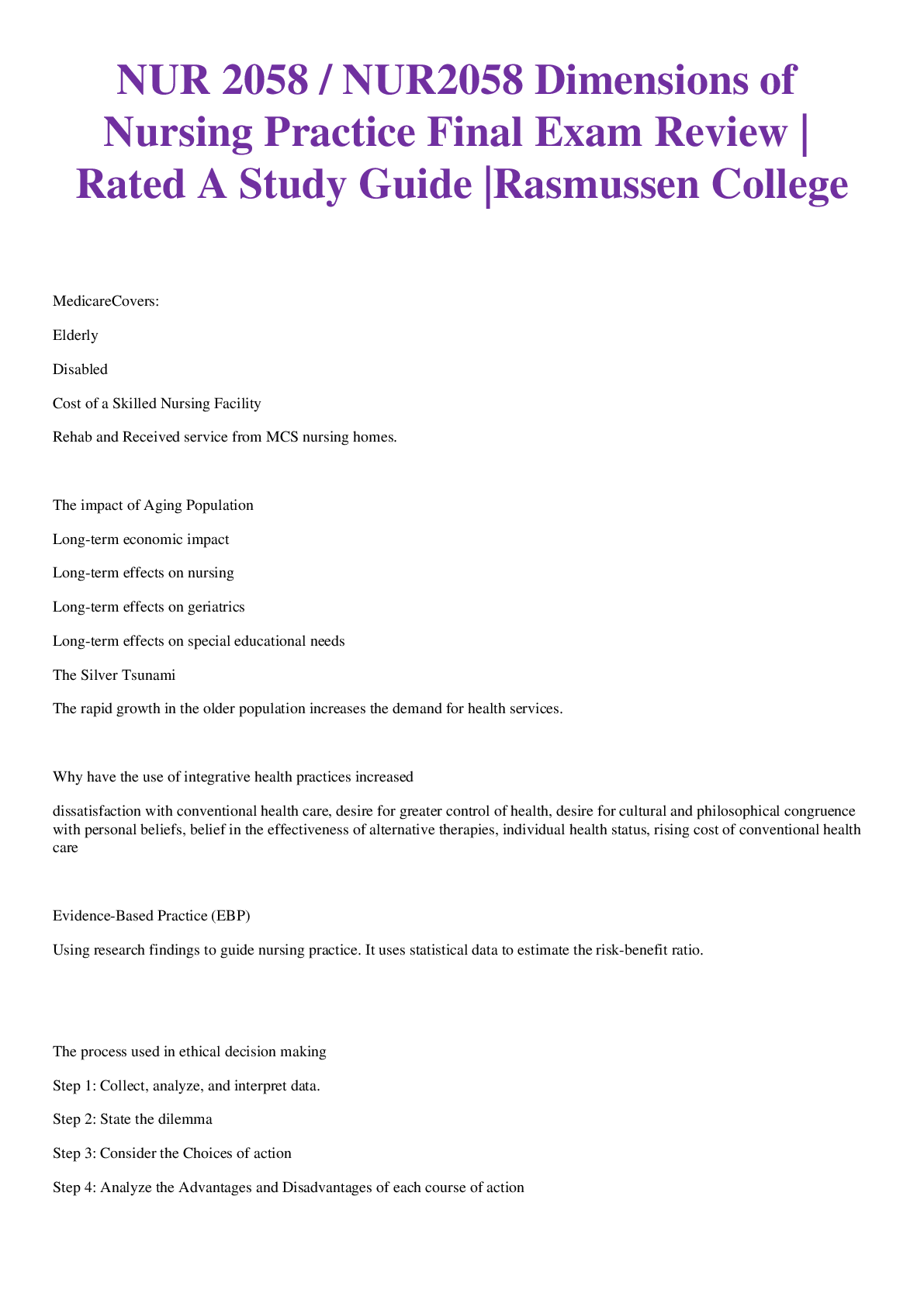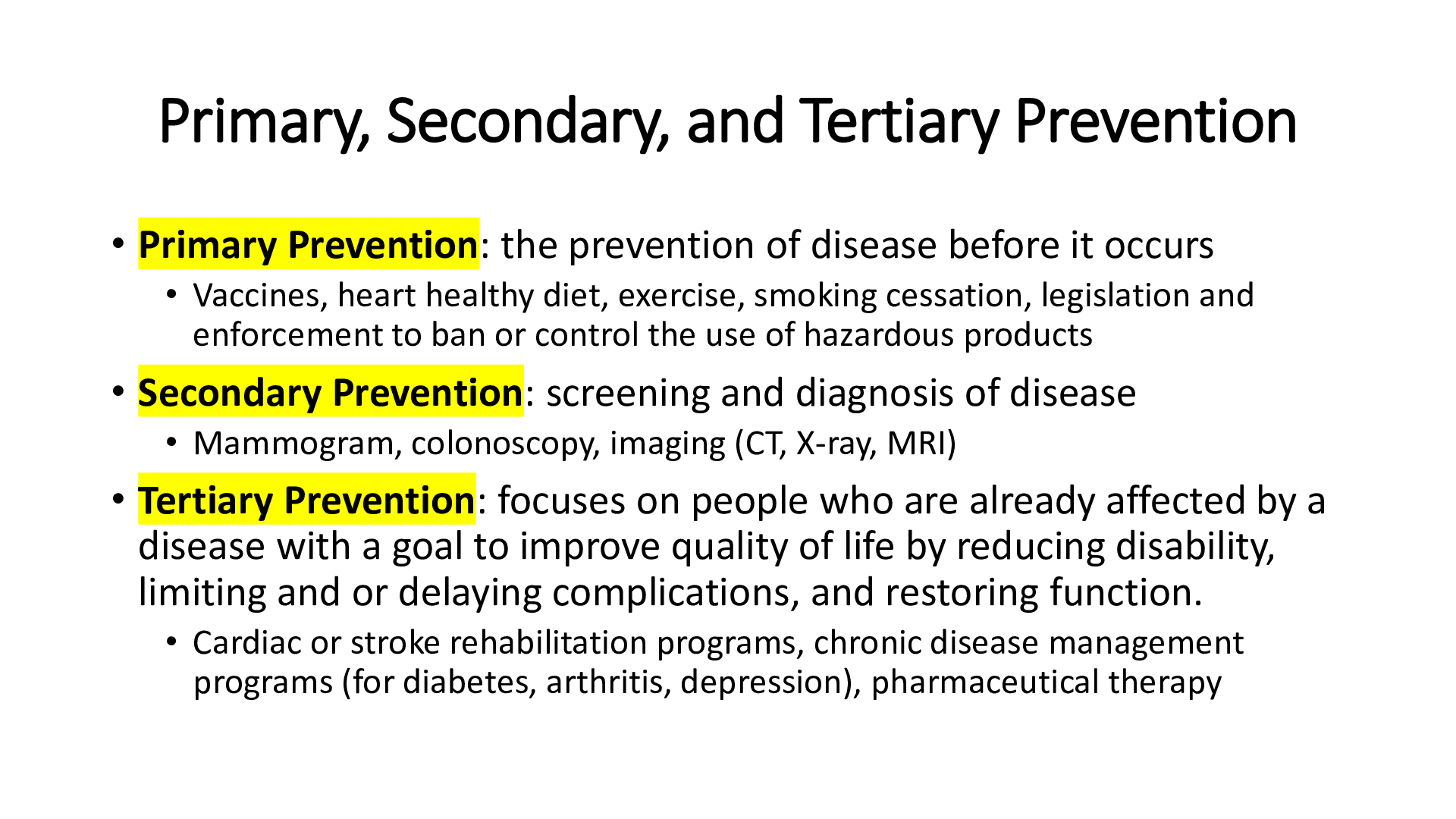Film Studies > EXAM REVIEW > FILM TV 6A / FTV6A_FINAL EXAM REVIEW (All)
FILM TV 6A / FTV6A_FINAL EXAM REVIEW
Document Content and Description Below
FTV 6A FINAL EXAM REVIEW 1) What defines a “major” studio from a “minor” studio? Name the “Big 5” and “Little 3.” Compare and contrast their structure, types of production, and pos... ition in the industry. - Big 5 – Which studios? - Little 3 – Which studios? - Vertical integration - B-pictures - Contracted talent - Explain the historical significance of everything you discuss, and explain the connection between what you discuss Hollywood Majors (Overall Description) ● Production, Distribution, and Exhibition o Distribution & Exhibition in New York ● Determines budget, type & quantity of films ● Production lots, backlots, and ranches o (had own fire departments, water towers, tried to be mini-city so no one had to leave; reused false front sets in different films until they burned down; ranches in Malibu, Santa Monica, or SFV for more wild scenery...become state parks or housing developments by end of 20th century) o Studio Boss ▪ (all powerful on the studio lot but not necessarily owners of the company; communicators to New York City; constant stream of telegrams - can we buy this? Do this? ; supervising contracts with the talent, union, guild) o Head of Production ▪ (position created to focus on making 50 films / year; Goldwyn / MGM / Sony - Columbia; producers underneath the head of production (10-15 on the lot) each responsible for 4 or 5 films and each have a specialty - ie. Westerns, romance, etc.) o Story Dept ▪ even today - based on preexisting story material; studios buying dozens of these a year; common to buy a story before it is even printed/staged/seen by the audience - ie. Unproduced plays...Casa Blanca) o Stars ▪ could see your favorite star in a new film essentially each month ▪ by the late teens / early 20s, there aren't enough "natural" stars (ie. Mary Pickford and Charlie Chaplin), so Hollywood develops its own star-making apparatus (ie. FTV 6A Cosmetic surgery or training -> puts them in a bunch of films in their 1st year -> check fanmail, ask exhibitors about buzz, look at reviews, etc. tried to see if there were any roles they fit in and if the studio made a lot of stuff with those roles; those picked up got a bigger salary and bigger parts and you'd be stereotyped in "your role")... a big part of this is… o Long Term Option Contract (7 years) ▪ Long Term Option Contract (7 years) ● not just the stars but directors, writers, producers, etc. signed to these; bound you to the studio usually exclusively for up to 7 years ● large volumes, 30-50 pages in length ● billing (what the person's name will look like in relation to the others on the credits and ads) ● salary level (stars paid very well!...but had to work hard for their money) ● no creative control; work 40 weeks a year (M-F and even Saturday half days) ● no percentage of the profits (very well paid; but not dependent on the success of the film; no "net profits") ● limited to 7 years or else it'd be indentured servitude o Publicity Dept ▪ Hollywood news is not news... it's hype! About the studios, stars, etc. ▪ also includes huge quantity of glamour photos ▪ "off-casting": let the bad girl play the good girl every once and a while just so it's not too predictable to the public ▪ James Cagney (Warner Bros. 7 year contract; 1st year makes 4 films with small supporting roles and then picked up; gangster films but off-cast every once in a while...always wanted to do musicals and comedies - got to do Footlight Parade with Warner Bros. - so, didn't sign again and instead went to a B film company and made films just the way he wanted; total flops...small budgets, made distribution, etc. -> signs another Warner Bros. contract as a result) ▪ stars avoided roles they hated by "staying home" - missing work resulted in a suspension FTV 6A ▪ Joan Crawford and MGM "I don't want to ice skate!" Tried to stay home but was unsuccessful ● Control first run theatres (15 % of theaters but 75% ● Share films to fill screens ● Theaters require 100/yr while studios made 50 ● Cooperate to reach national audience ● Cheap tickets for high quality films ● Supreme Court calls oligopoly in late 1940s (collaborative more than competitive -> Anti-Trust Act) ● The Big Five (in order of prestige/position) Paramount ● Adolph Zukor ● 1912 Famous Players ● 1914 Hodkinson and Paramount ● 1916 Famous Players and Paramount merge; Producer Jesse Lasky ● -Director Cecil B. DeMille; Pickford, Fairbanks, Valentino dominate in roaring 20’s ● 1933 Receivership (suffers greatly during Great Depression (bankruptcy) because its so big; gets out of bankruptcy by 1936... Mae West helps) ● 1936-1964 Pres. Barney Balaban ● Studio Boss Y. Frank Freeman ● 1966 Gulf and Western ● 1000+ theaters, controlled Chicago, the South, New England and Canada. ● Famous theaters the Brooklyn Paramount and the Oakland Paramount. ● Classy films for classy audiences; sophisticated comedies ● Films from Class o Trouble in Paradise (Lubitsch, 1933) o Sullivan’s Travels (Sturges, 1941) o Sunset Blvd. (Wilder, 1950) o Rear Window (Hitchcock, 1954) o The Godfather (Coppola, 1972) ● Paramount Directors o Ernst Lubitsch 1892-1947 ▪ Trouble in Paradise! ▪ shows Paramount's "classiness" o Cecil B. DeMille 1881-1959 FTV 6A ▪ big self-producer; big hits ▪ 1914 The Squaw Man o Joseph von Sternberg 1894-1969 ▪ pre-code sex dramas usually starring Marlene Dietrich o Preston Sturges 1898-1957 ▪ one of Paramount's greatest writer; screwball comedies; becomes a director / writer in 1940 (Paramount makes him a director); galaxy of great actors ▪ 1941 Sullivan's Travels o Billy Wilder 1906-2002 ▪ great writer of romantic comedies who becomes a director in 1944 ▪ serious movies, film noire, etc. ▪ 1950 Sunset Boulevard o big budget Alfred Hitchcock films ▪ 1958 Vertigo ▪ Psycho and others ● Loved to bring in folks who already had a following from other forms of mass media (ie. Broadway) but also have own home-grown Hollywood stars (like MacMurry or Ladd) (LeBron James in Trainwreck! L.O.L.) ● Bob Hope and Bing Crosby o we think of Crosby as a radio star or crooner but he's also a movie star! A few romantic comedies and serious pictures o Bob Hope was a Broadway and radio comedian but became a big movie star at Paramount! o Paramount pairs the two up every year or two (the "road" films"... ie. "Road to Rio") o huge money making comedies ● The Paramount Program o Fleischer Cartoons (Betty Boop, Popeye, Superman) o Paramount News o Live Action Shorts (often big band musical) ● Post-Studio Fate ● 1966 Gulf & Western ● Leads the way in the Reagan Era (Indiana Jones) ● Today: Viacom, CBS ● Major post-studio franchises [Show More]
Last updated: 1 year ago
Preview 1 out of 28 pages
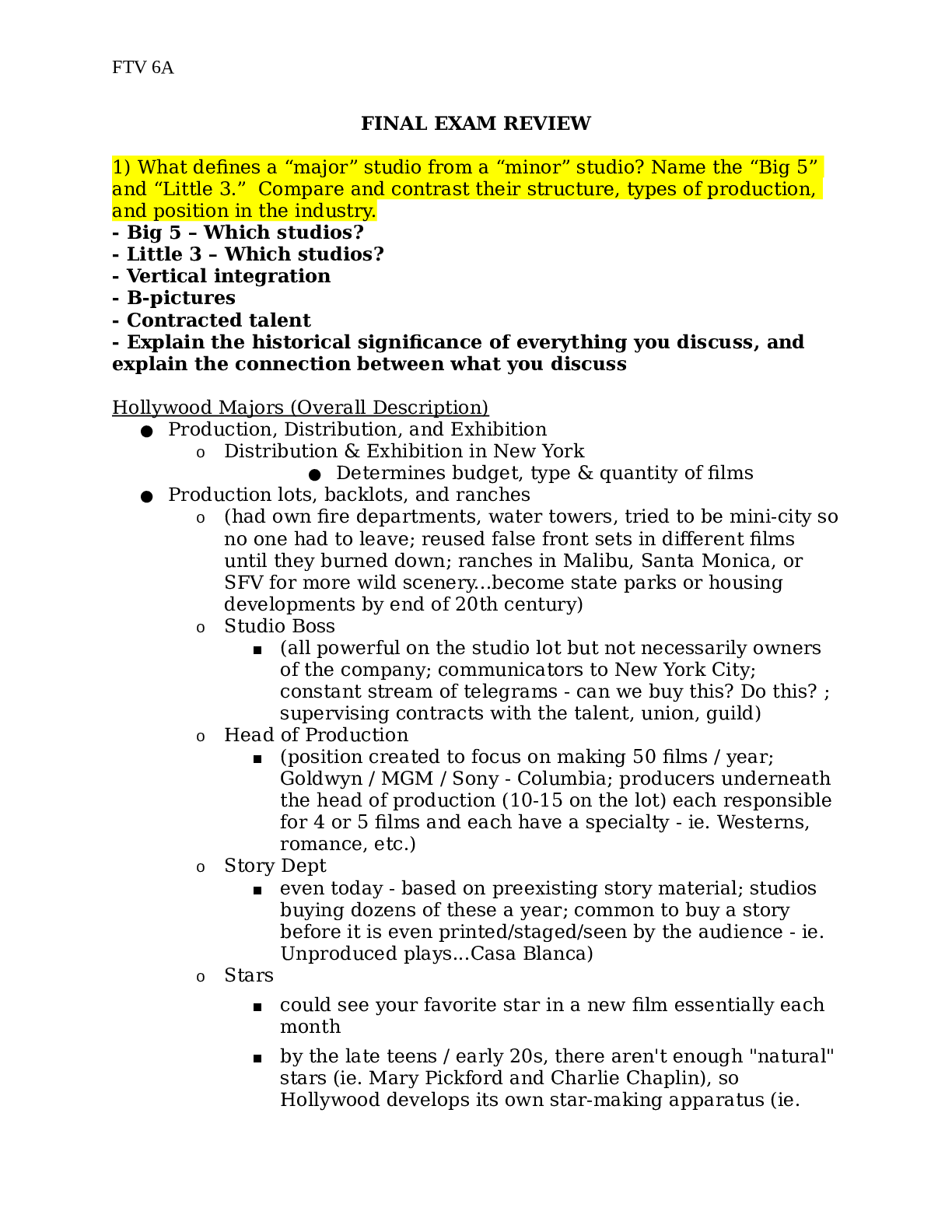
Reviews( 0 )
Document information
Connected school, study & course
About the document
Uploaded On
May 11, 2021
Number of pages
28
Written in
Additional information
This document has been written for:
Uploaded
May 11, 2021
Downloads
0
Views
70

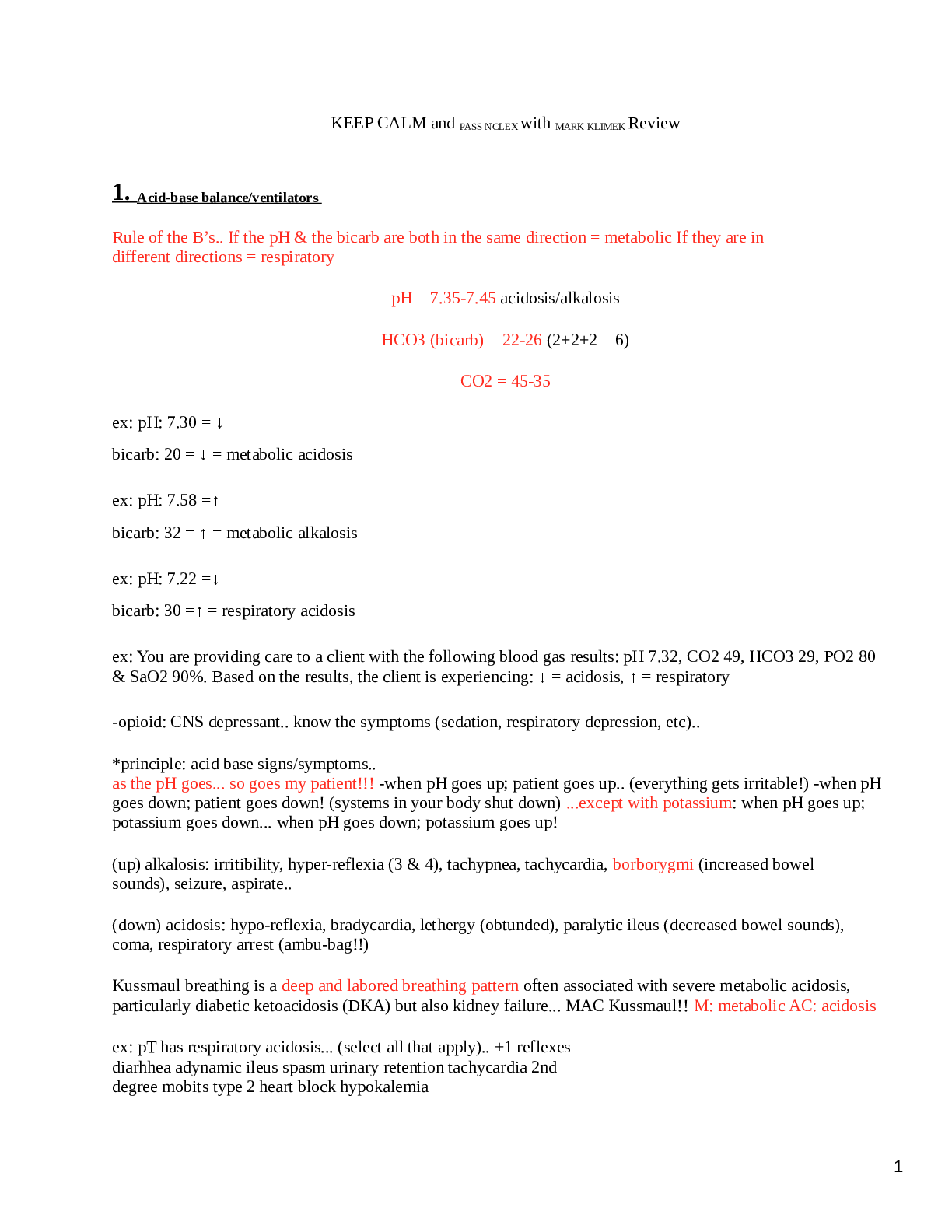



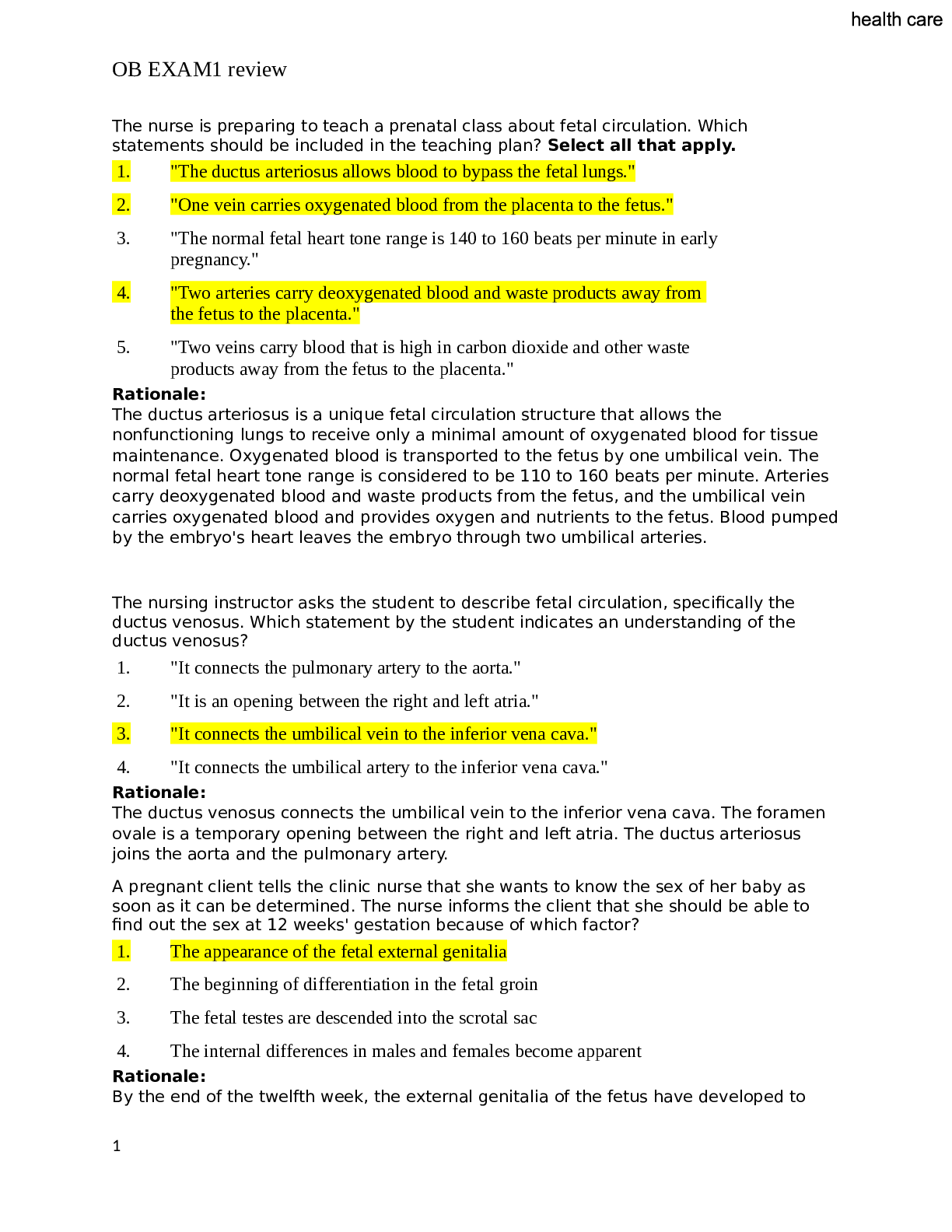

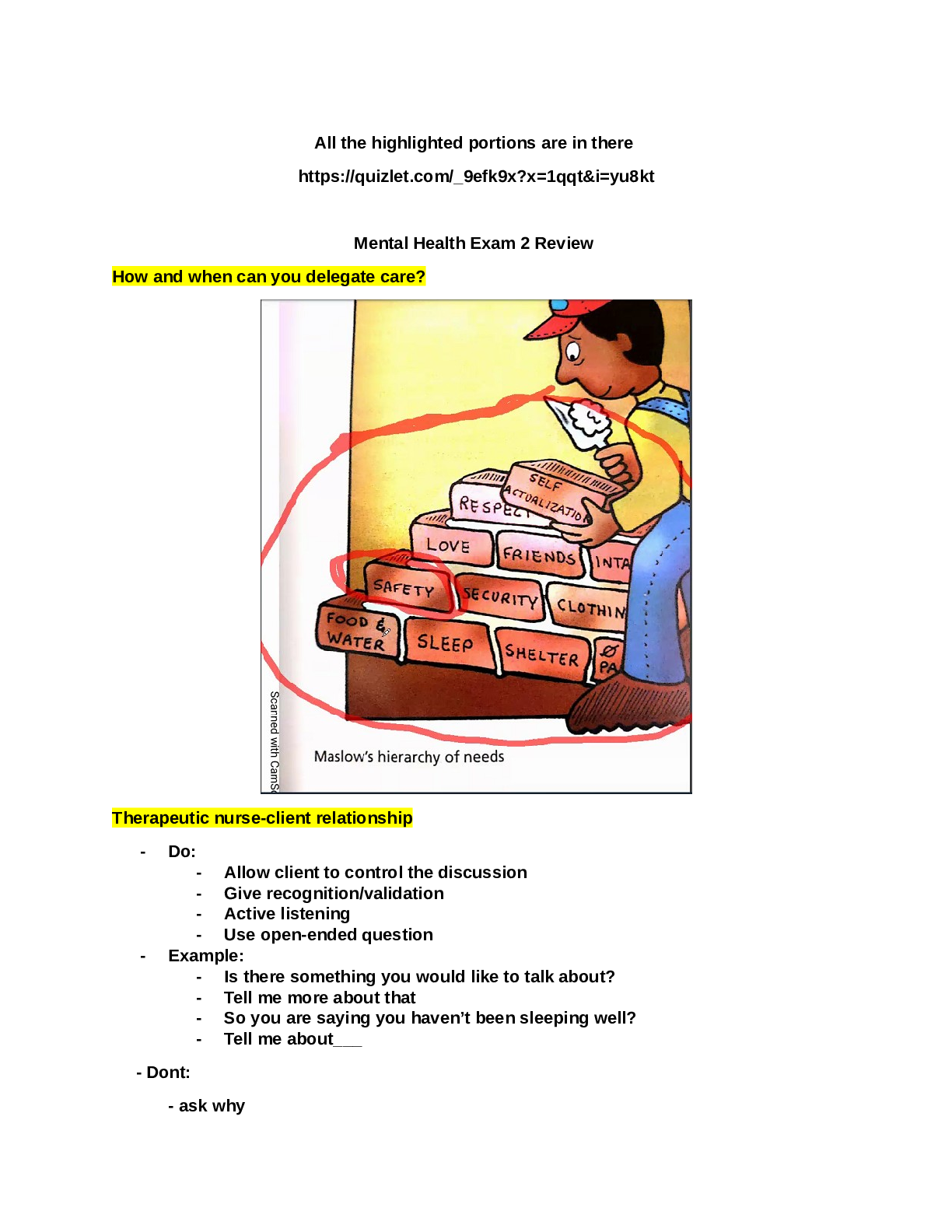
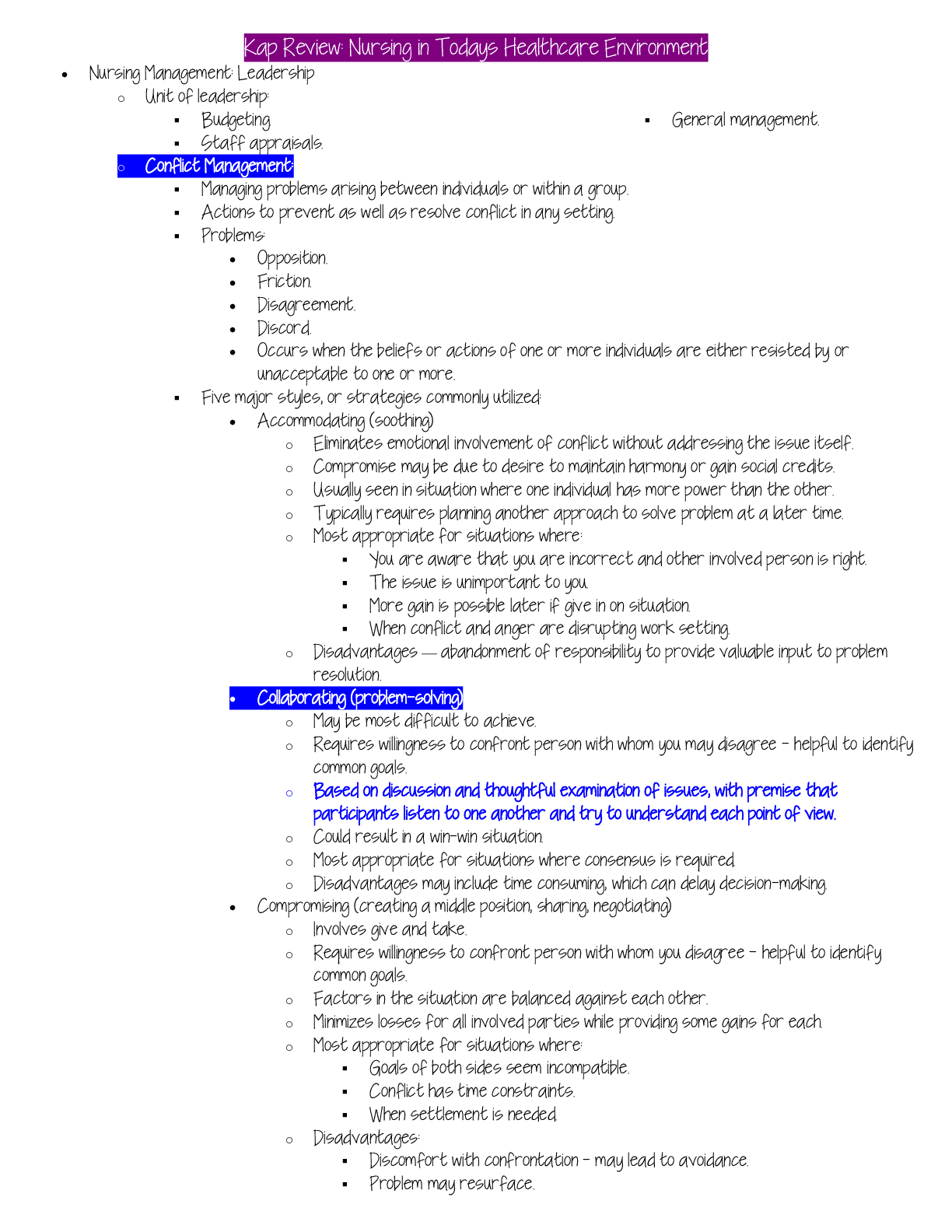
.png)


.png)
